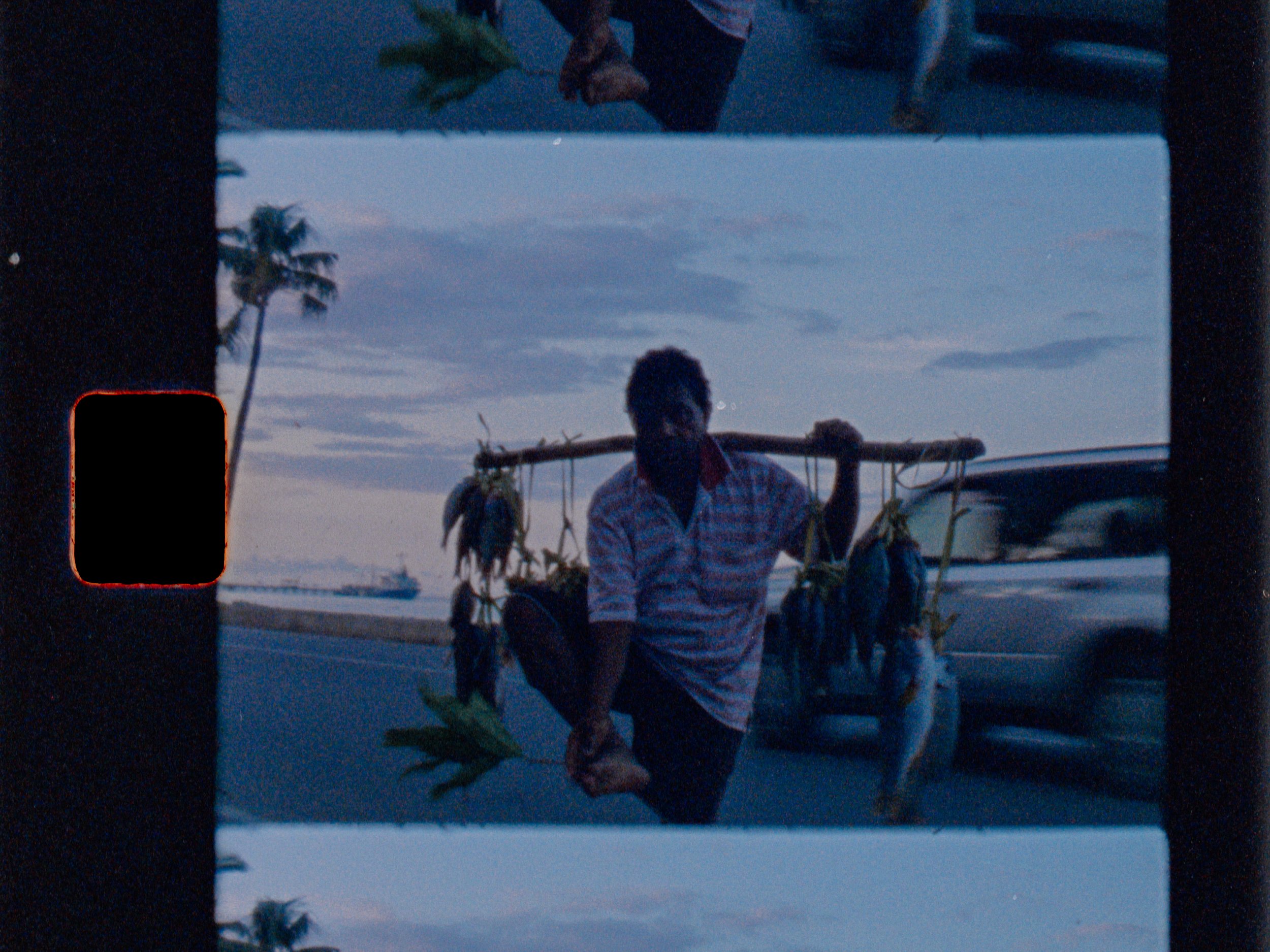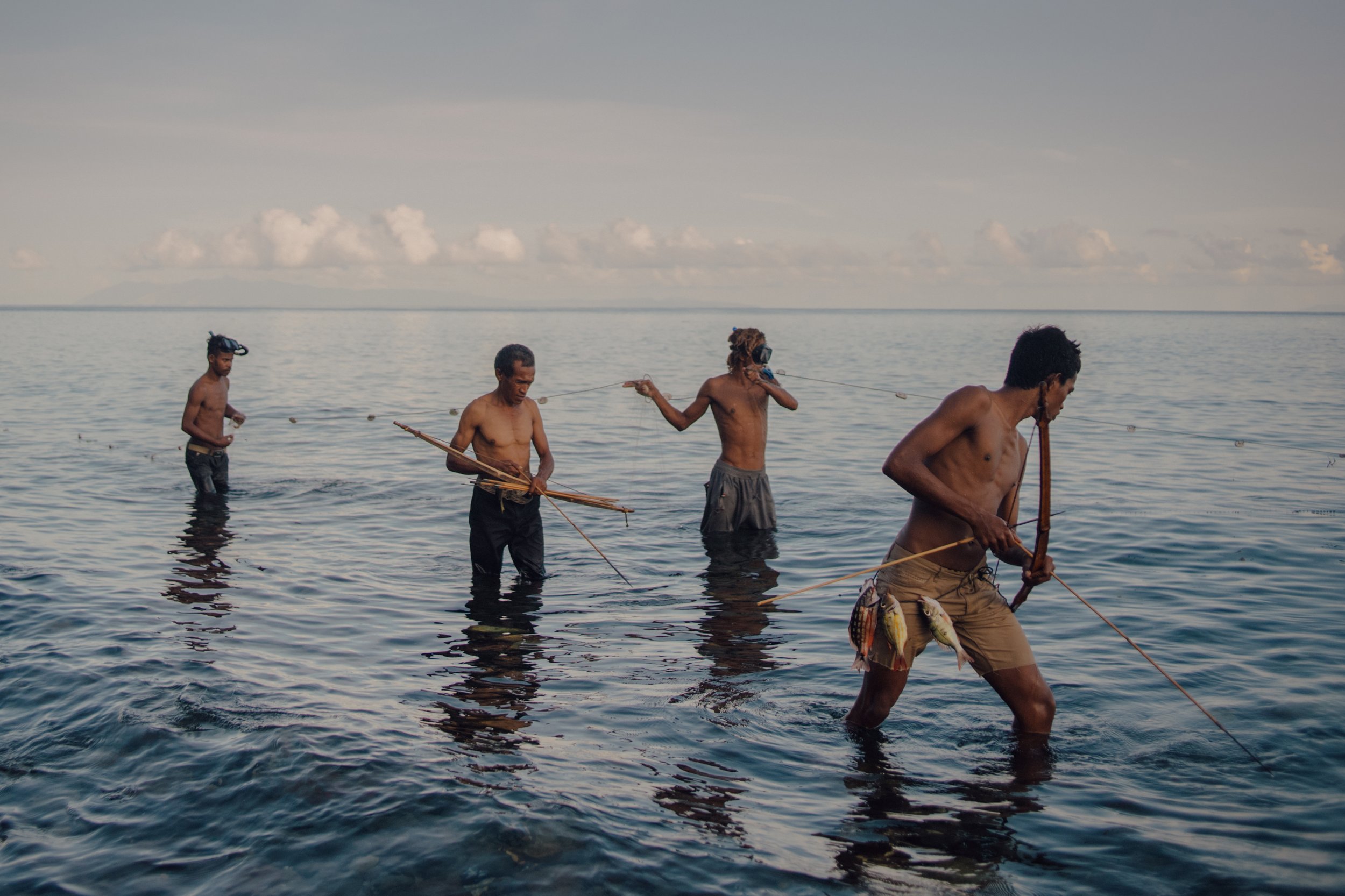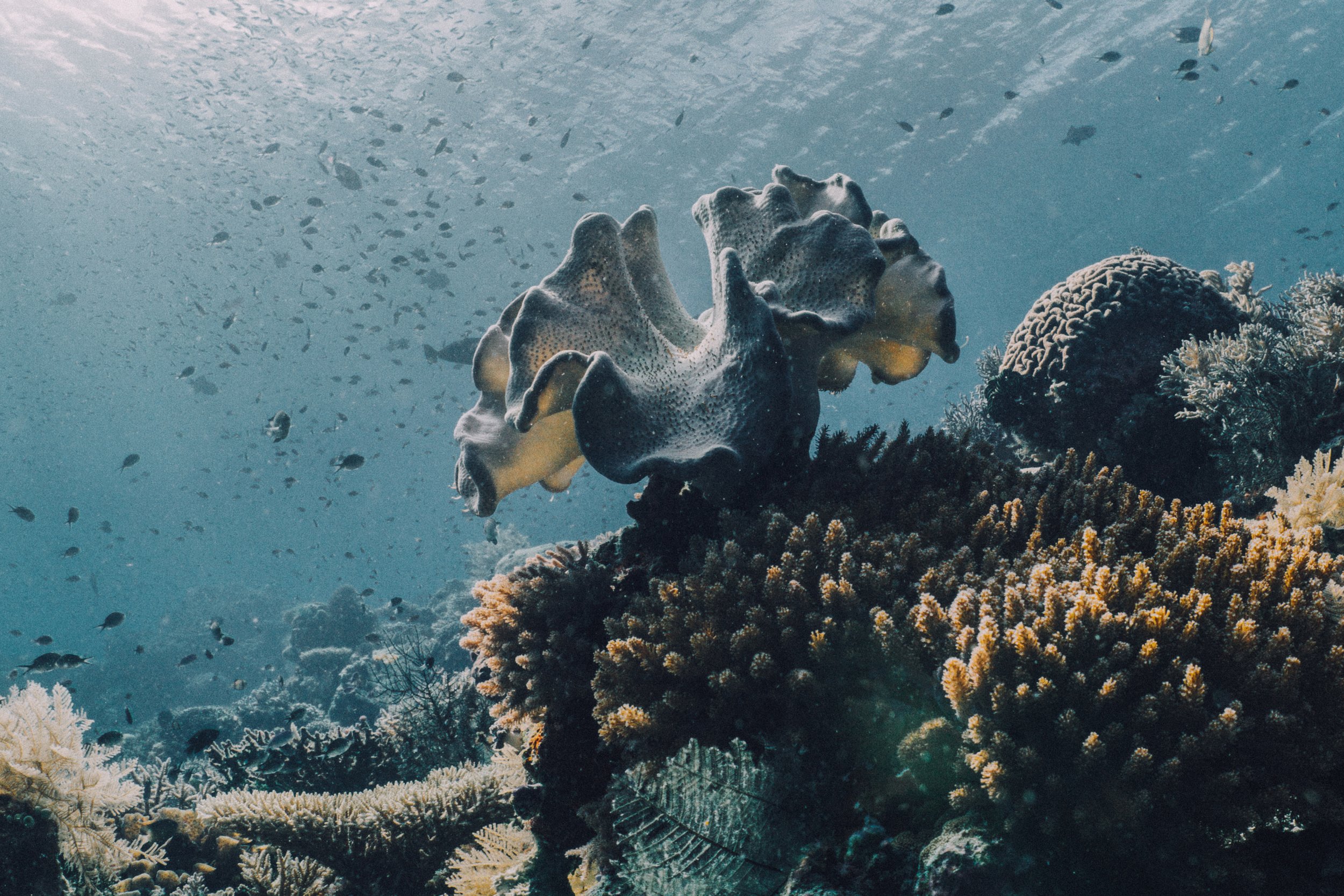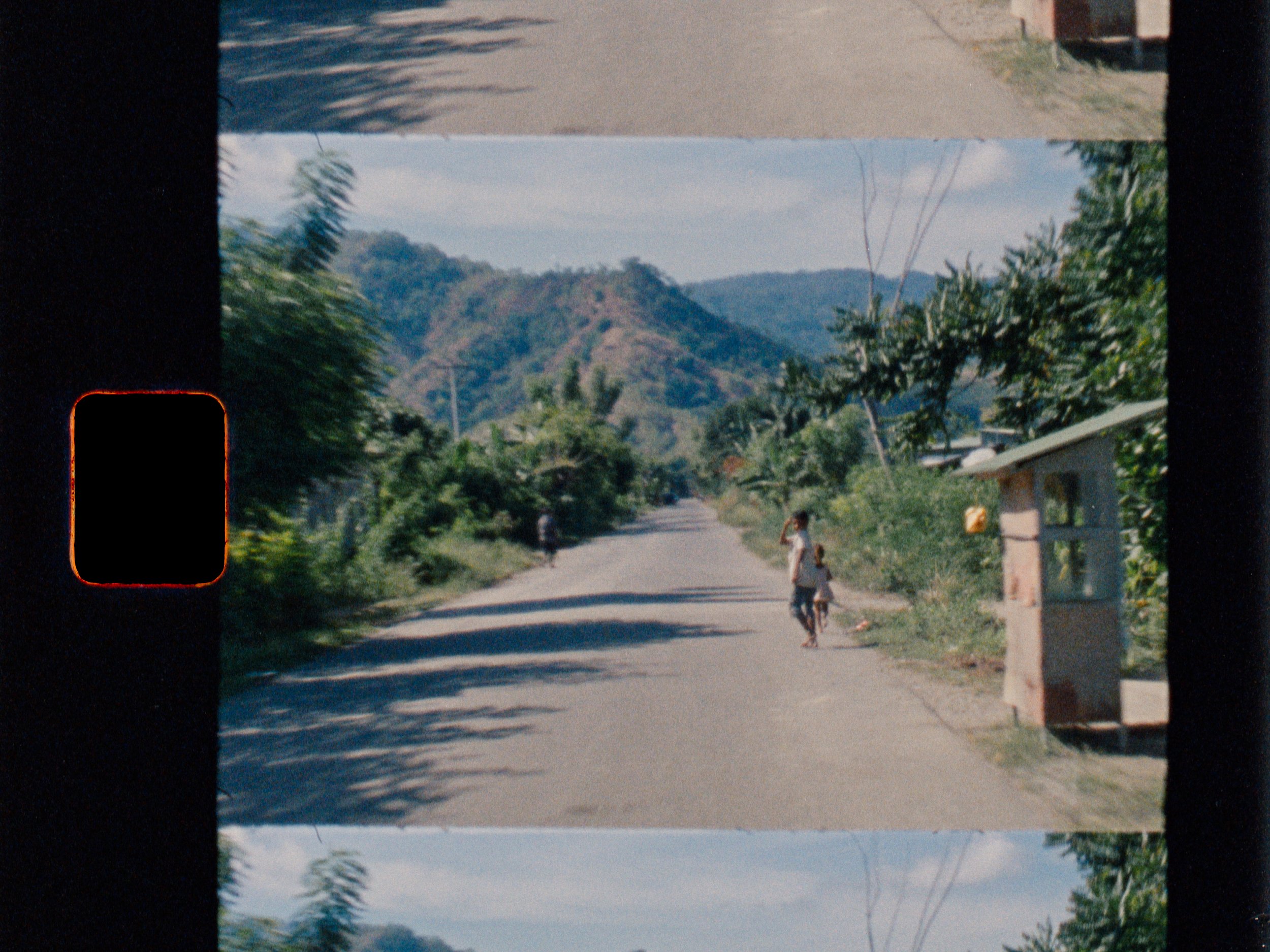
Boys of Subaun
Shot & edited by Martina Trepczyk
These photographs portray the delicate relationship between the inhabitants of Subaun, Timor-Leste’s mainland and the island of Atauro and their immediate environment, their coral gardens, god’s pristine pockets.
Martina Trepczyk had the privilege to witness such gentle care and honour devoted to a daily practice. Fishermen taking only what they need. Leaving the rest to be, a marvellous oasis just as the tale describes. She deliberately chose to shoot on mixed media to embody both past and present. The vibrant colours of the analog super-8 truly remind her of the Timorese folklore story. The grain gives way to the grit and persistence of their hard work. The high quality and sharp feel of the digital photographs highlight the dense, yet brittle side of the story, as if it was also packed with pain and current challenges. The last shot of the series; the Blue Whale, combines both worlds aesthetically. A digital shot, which seems to have artefacts and grain in it, when in fact the water column was so rich in plankton it turned the crystal clear water into a granular setting.
Boys of Subaun–a photography series that aims to blend dreamy poetry and documentation–was nominated for LOBA Leica Oskar Barnack Award 2024.
Photography Series
2022
Timor-Leste

Ancient Tale
A long, long time ago, a little boy came across a young crocodile who had left the scarce swamp in search for an abundant ocean where his dreams of becoming big and strong would come true. As he neither found sea, nor food, his strength left him. His body turned dry and he laid down to die. The boy's heart sank for the crocodile and he carried him to shore. Soon, saltwater brought the crocodile back to life. The crocodile thanked the boy for his kindness and promised to return whenever needed. He kept his word. Many times the boy wanted to travel, so they explored the sea together, while sitting on the back of his devoted friend.
One day, the crocodile proposed a great journey towards East, the ‘lands of the rising sun’ (Lorosae) where they would find treasure, a golden medallion, much like the sun itself. After they had crossed vast open waters for days, months and years, the horizon remained the same - parting the sky and the sea. No end in sight. In the middle of nowhere, the crocodile stopped and closed his eyes. His body hardened, turned into earth and stone, grew mountains and forests. His scales formed hills and a new land came to be. The boy, who was now a man, received his final gift in gratitude. Amazed by the beauty beneath his feet, he stepped onto his new home and called it ‘Timor’ (meaning East). Something shining caught his eye: a golden treasure, a dangling medallion around his neck, just what they had set out to find so many years ago. This is the folklore story of Timor-Leste.
Timor-Leste Then and Now
Remaining a Portuguese colony until 1975 internal conflict preceded a unilateral declaration of independence and an Indonesian invasion and annexation. Resistance continued throughout Indonesian rule, until in 1999 a United-Nationed-sponsored act of self-determination led to Indonesia relinquishing control of the territory. As Timor-Leste, it became a new sovereign state on 20 May 2002. In recent years, the Maritime Boundary Office has pushed actively towards ocean conservation and blue prosperity. Now, it combines ancient tales, indigenous traditions and an abundance of life.
Timor-Leste’s dazzling coral reefs host an astonishing array of marine life boasting over 500 species of coral and more than 2,000 species of fish. Reefs that reach hundreds of years in age. Nestled within the world’s epicentre, the ‘Coral Triangle’, these vibrant underwater gardens not only captivate with their beauty but also provide essential eco systems. For both, the animal kingdom and the man made one.
Providing food is a group effort, usually reserved for boys. These photographs show traditional fishing techniques starting early at dawn during blue hours that last well into the early morning under the heat of the blazing sun. On the hunt for reef fish at their doorstep, these men cherish their home’s biodiversity. A mere hundred metres further into the deep, the Pigmy Blue Whale migration of approximately 600 individuals passes by annually. The largest and most gentle giants that have ever roamed the planet, come into plain sight right at the beach. During a two week period, 4 metre high blows are visible and audible during day and night. A reason for joy for the boys of Subaun, as they look out for ‘Ikan Boot’ (Big Fish).
However, darkness does not halt here. As I was photographing underwater I could hear and feel a rumble move through the water as next door neighbour Indonesia, only a few kilometres away, chose to use mining, a volatile, outdated and destructive fishing method. A stark contrast to the selective and precise bow and arrow. A changing climate, higher temperatures target these waters too. Leaving an impact on plankton, phytoplankton and corals, which results in smaller fish stocks and malnourished whales. Hunted and sought after from all fronts.
These photographs portray the delicate relationship between the inhabitants of Subaun, Timor-Leste’s mainland and the island of Atauro and their immediate environment, their coral gardens, god’s pristine pockets. It was a privilege to witness such gentle care and honour devoted to a daily practice. Taking only what they need. Leaving the rest to be, a marvellous oasis just as the tale describes. I deliberately chose to shoot on mixed media to embody both past and present. The vibrant colours of the analog super-8 truly remind me of the folklore story. The grain gives way to the grit and persistence of their hard work. The high quality and sharp feel of the digital photographs highlight the dense, yet brittle side of the story, as if it was also packed with pain and current challenges. The last shot of the series, the Blue Whale, combines both worlds aesthetically. A digital shot, which seems to have artefacts and grain in it, when in fact the water column was so rich in plankton it turned the crystal clear water into a granular setting. ‘Boys of Subaun’ - a photography series that aims to blend dreamy poetry and documentation.
Martina Trepczyk’s submission as nominee for
LOBA World Press Photo Award - Leica Oskar Barnack Award 2024
















